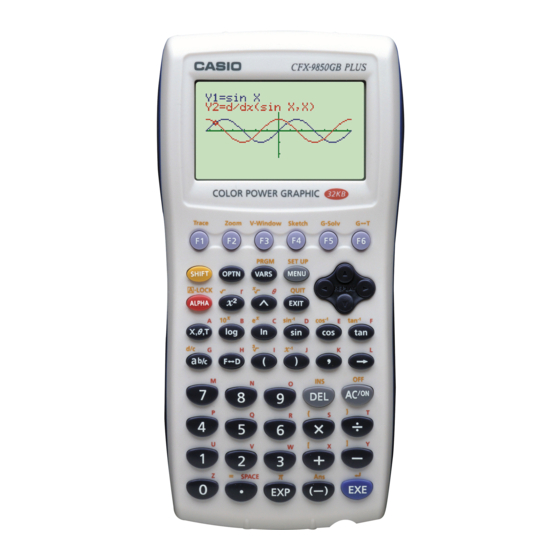Casio CFX-9850GC PLUS Podręcznik wykresów - Strona 4
Przeglądaj online lub pobierz pdf Podręcznik wykresów dla Kalkulator Casio CFX-9850GC PLUS. Casio CFX-9850GC PLUS 12 stron. 6. matrix calculations
Również dla Casio CFX-9850GC PLUS: Katalog produktów (16 strony), Specyfikacje (1 strony), Podręcznik komunikacji (13 strony), Podręcznik programu (18 strony), Przeczytaj tę pierwszą instrukcję (13 strony), Podręcznik funkcji (14 strony), Podręcznik wykresów (8 strony), Podręcznik wykresów (6 strony), Podręcznik wykresów (12 strony), Podręcznik wykresów (12 strony), Podręcznik wykresów (12 strony), Podręcznik wykresów (10 strony), Podręcznik obliczeń (13 strony), Podręcznik obliczeń (18 strony), Podręcznik obliczeń (15 strony), Podręcznik liczb zespolonych (6 strony), Podręcznik obliczeń (6 strony), Podręcznik obliczeń (20 strony)

